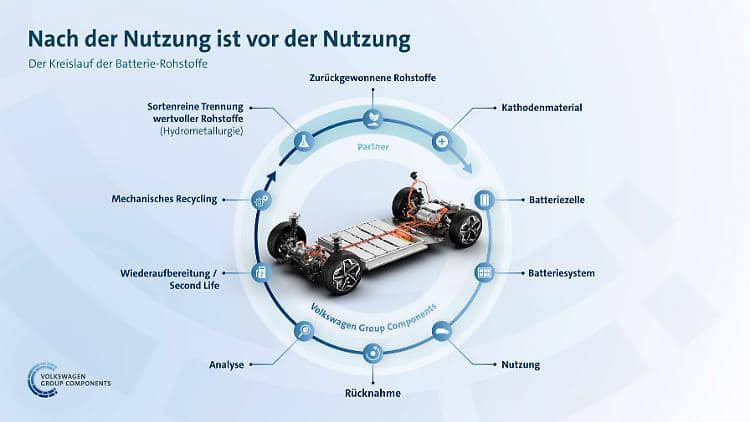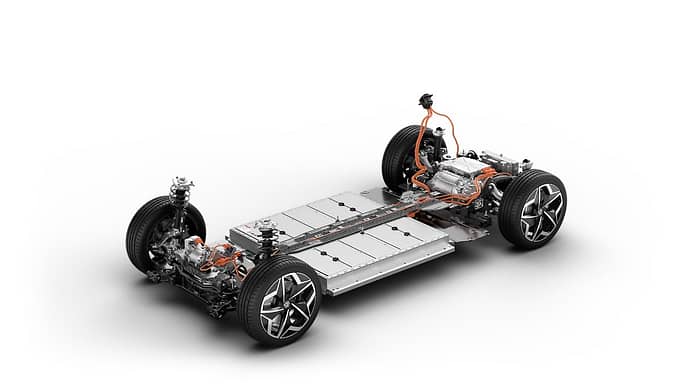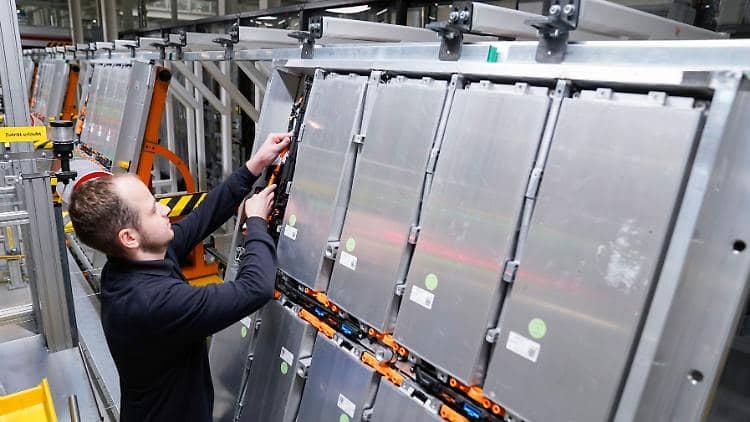Sunday, April 11, 2021
Who wants that …
Electronic Cars – Are Big Batteries Really Good?
Electric cars are tempted by ever-greater batteries and ranges. This makes it attractive to many drivers. But each additional lithium cell also has a negative effect on the ecological balance.
When the first electric cars with lithium batteries appeared on the market more than 10 years ago, they were also very expensive due to the high costs of the battery. For most drivers, the price range ratio was incorrect. Many first-generation Stromers can travel 100 kilometers only on a single battery charge. Meanwhile, traction battery prices have dropped sharply, and many current models with windows with a suitable long-distance range are available at affordable prices.
In many cases, the customer can choose from different battery sizes and thus ranges from a series. There are a lot of arguments in favor of the largest possible batteries, but at the same time it buys many disadvantages. Finding the perfect balance is not easy.
How big is an eco-backpack

Here Volkswagen demonstrates how it can close the life cycle of an electronic car battery.
(Photo: Volkswagen)
Perhaps the most important aspect of the size issue is the battery pack eco-bag. Electronic cars are mainly promoted as an environmentally friendly transportation alternative to combustion engines, because as long as they are refueled as frequently as possible with climate-neutral electricity, the carbon dioxide emissions when driving are also very low. But when thinking about carbon dioxide balance, a battery’s eco backpack must always be taken into account. The larger this, the greater the associated impact on the environment and climate.
According to ADAC calculations, about 100 kilograms of greenhouse gas CO2 is produced per kilowatt-hour of capacity in battery production alone. In the case of Kona Electric, for example, offered by Hyundai with either a 39 or 64 kWh battery, an additional CO2 emissions of around 2,500 kg are already being generated when building a larger battery variant, which, according to ADAC, corresponds to an average The amount of electricity in a two-person household in two years is in the German electricity mix.
In addition, electronic cars with large batteries perform worse in terms of consumption, because increased battery capacity also means significantly more weight, which in turn increases energy consumption and also has a negative impact on the carbon footprint.
Raw material mining
But carbon dioxide pollution is not the only factor decisive to account for the environment. The extraction of raw materials needed to manufacture batteries has a negative impact on the environment. Mining materials such as lithium lowers the water table in mining areas and never rips plantable holes in the landscape.
On the other hand, having a bigger battery also provides several advantages in terms of usage. Anyone with a long range e-car will also use it frequently, as vehicles with short range are not suitable for many application scenarios or have to be charged a lot. If the battery is large, then you are more flexible in many ways. And large battery electronic cars usually have charging technology on board, which allows electricity to be stored faster. Large batteries are also beneficial to the driver’s psyche, as they reduce fear of potential range and stress.
Big batteries last longer
In addition, the size affects the aging process of the traction battery. The critical effect on long-term performance is the number of charge cycles, because the power capacity shrinks slightly with each charge. This is also known as degradation. The higher the charge cycles, the greater the loss of capacity and hence the aging of the battery. If the battery offers a range of 400 km, it will spend only half the life of a battery with a range of 200 km over the course of its life cycle.
Cost-intensive battery replacement becomes increasingly unlikely as the battery size increases, especially since a larger battery always provides the larger buffer when capacity drops either way. If the capacity of an already small battery decreases significantly, this can make it difficult or even impossible to use in winter, because the cold makes the range shrink even more, which limits the possibility of using severely degraded batteries.
There is no general formula
However, there cannot be a general recommendation as to the correct battery size. This also depends on your personal life situation and its use. If you want to use as little resources as possible and protect the climate as possible, you should choose a small electric vehicle with a small battery. Lightweight L7e strollers, like the two-seater Microlino, which will be launched this year, are perfect here. As an alternative to such electric dwarfs, there are car models like the base version of the Fiat 500 or the Mazda MX-30, which offer moderate battery sizes and ranges of around 200 km.
This range window should provide enough space for the regular occupants. Models with smaller batteries are also recommended for those who want to use the electric vehicle mainly as a second city car. On the other hand, if you just want to own a car that can also be used for longer rides or even vacation trips, then it is recommended that you invest in a bigger battery. Then you won’t need a second car with a combustion engine for long runs. However, if you rarely need a car on long trips, you can instead just rent it when necessary and use your electric vehicle with a small battery for daily use. What you will save when purchasing a Stromer with a small battery will suffice for many car rentals.
Speaking of costs: When it comes to battery size, available budget is always important. As a general rule, the larger range also costs a lot more money. The reach giants are still well above 50,000 euros in price, despite the innovation bonus. If the small battery is enough, you can get into e-mobility for just over 10,000 euros thanks to the environmental bonus. With the smaller battery, the financial barrier to entry into mobility that is assumed to be more climate-friendly also drops.


